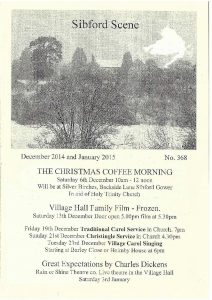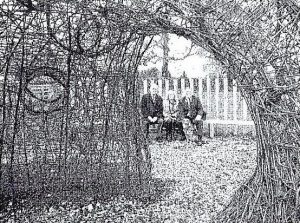A History of the Sibford Table Tennis Club
The Table Tennis Club has now closed. It was in 1948 that Roland Herbert, who taught woodwork at the Friends School suggested that we should form a club and a meeting was called at Sibford Gower School. Twenty two people came including several of the younger members of the Friends School staff and it was decided to hire the Mission Room for four nights a week, for what was very much a social club. We applied for rations of tea and sugar. We also got a licence to get fuel for the fire as wartime restrictions were still in force.
We managed to buy a rather poor full sized table. Also in the same year the Banbury Table Tennis League was formed and it was decided that if we wanted to play in that we would need a better table. Again it was Roland Herbert who came to the rescue by offering to make us a table and obtaining the wood, which was still in very short supply, especially the thick plywood for the top.
In 1949 we entered two teams in the Banbury League although our playing space was restricted by a big cupboard, a raised platform at the far end of the room and a harmonium and a piano in front of that, but mostly by the coke stove that stood out from the wall.
The lower age limit for club members was fifteen but in 1950 we started using Thursday evenings for ten to fifteen year olds. Among the first youngsters were George Hall, Fred Inns, Stan Haynes, Bill Dunkley and Bill Barton. They had no computer games or television to keep them at home in those days.
Travelling to matches was quite a problem in the early years as very few members (had) cars and petrol was still rationed. We cycled to some matches but that was not much fun in winter weather and we were thankful when more people got cars.
In the early years of the league, Sibford players won many of the ladies trophies and had two ladies that played in the Oxfordshire team.
At this time four players formed a team but that soon dropped to three as it has been ever since.
As time went on more young players wanted to play in the league and the number of teams increased until in the 1980s we had eight teams for a few years which made it very difficult to find a night to replay postponed matches.
The youngsters practise night has continued for almost all of the club’s 65 years and although they got no proper coaching several of the young players have developed their natural abilities and become top players in the Banbury League.
In recent years the A team has usually taken one of the top two places in the first division and Jason Tustain and Sean O’Keefe have won the mens doubles and singles trophies.
We have now closed and the two teams that wanted to go on playing have formed a new club and play at Tadmarton.

